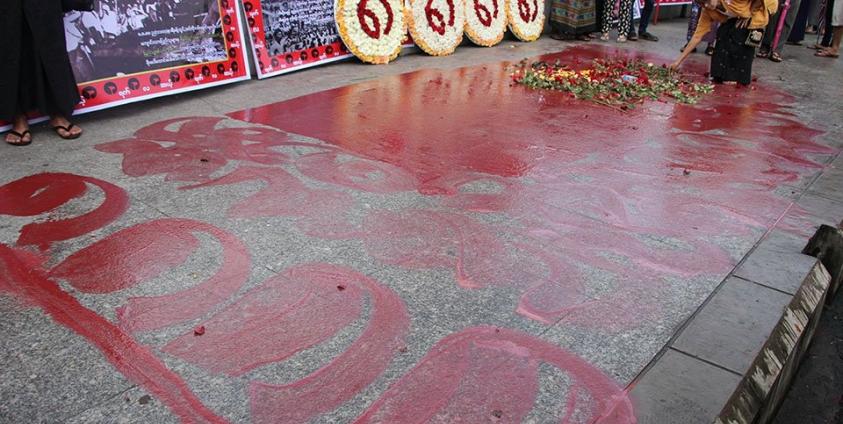People gathered today in front of City Hall, Yangon, in remembrance of those who died and participated in pro-democracy demonstrations on the 8 August 1988. The uprising was started by students in Yangon. Student protests soon spread throughout the country. Hundreds of thousands of ochre-robed monks, children, university students, homemakers, doctors and people from all walks of life demonstrated against the military government.
Ko Ko Gyi, 88-Generation students leader, said, ‘I would like to use a giant multi-coloured panoramic picture as a metaphor [for the 8-8-88 pro-democracy uprising]. We should not say the giant picture was painted by only one person, only one party, or only one group. Those who took part in the uprising are coloured dots in the picture. I also took part as a dot in this giant panoramic picture.’
Ah Yine, comedian and actor commented, ‘Whoever did it [whoever launched the crackdown], may be inferior officers or other people, a leader must must say he did it if he is an accountable leader. I’m still displeased until today for their lack of accountability.’
Min Zayya, 88-generation student leader, remembers the period vividly, ‘The “8888” period was like a front where fighting between armed soldiers and unarmed people took place. I also witnessed the hell. I saw the roads stained by blood. I saw many scenes of people running in fear for their lives, screaming and crying. I witnessed the scenes in which people were shot dead, and I heard many similar stories. If I have to say frankly, I was lucky to survive.’
The uprising ended on 18 September, after a bloody military coup by the State Law and Order Restoration Council (SLORC). Thousands of deaths have been attributed to the military during this uprising, while authorities in Myanmar put the figure at around 350 people killed.








